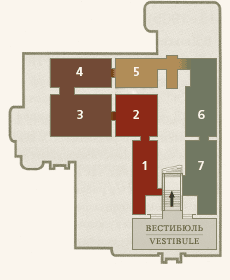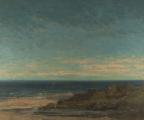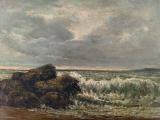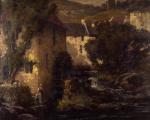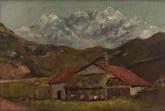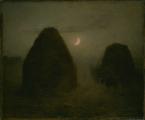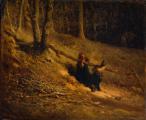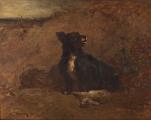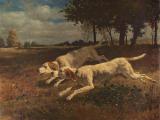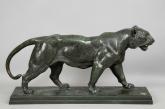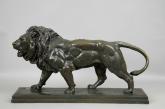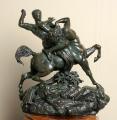Gustave Courbet, one of the key figures in French art of the nineteenth century, is represented in the display by landscape works. The artist was a consistent Realist, who reproduced nature in all her authenticity. A portraitist and author of monumental subject pictures reflecting the life of working provincial France, her types and customs, Courbet turned to the landscape in the 1860s. His perception of nature distinguishes him from both the Romantics and the Barbizon School. Defending the need to paint from nature and depict only what the eye sees, the artist sought to show the material fullness of the world as, for example, in his seascape of 1876. An active member of the Paris Commune, Courbet was subsequently forced to leave France. His last years were spent in Switzerland, where he produced one of his finest landscapes, House in the Mountains (circa 1874).
Jean-François Millet was an eminent exponent of French democratic art of I he nineteenth century. "I'm a peasant and that's that," the artist used to say of himself. The subject of his art was rural France, the patriarchal life of the peasants and their hard, daily toil. In the 1850s Millet worked in Barbizon, where his Women Gathering Firewood (early 1850s) was painted, in which admiration for the peasant woman's strength and stamina is fused with a painful awareness of the humiliation of being tied to the land.
Note the pictures Uprising (1848-1849) and Washerwomen on the Steps (1860-1860) by Honore Daumier, a master of many talents, graphic artist and caricaturist, painter and sculptor. The artist's pictorial heritage is not very large and works by him are rarely found in Russian museum collections. Born in the Napoleonic age, Daumier was a contemporary and eyewitness of two revolutions in France, 1830 and 1848. This played an important role in the formation of the artist's world view. He was uncompromising towards his enemies and championed democratic ideals.


